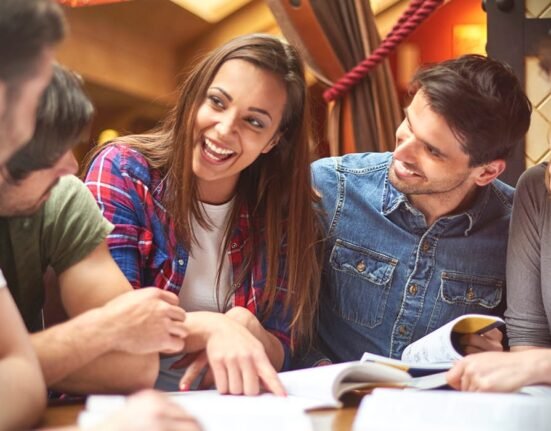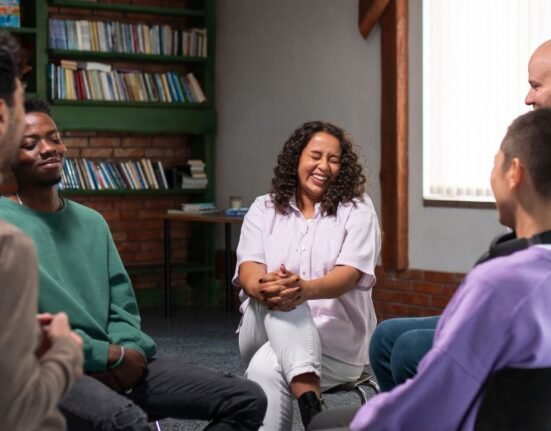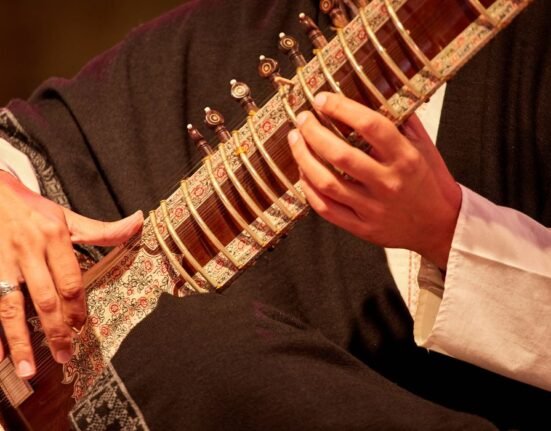Many of us have felt a deep feeling of sadness when our favourite animated characters struggle, or felt excited when they succeed. It is surprising how a digital character can cause such emotions. This happens because we tend to put our feelings and experience onto the character, forming a sense of connection or empathy (Siegenthaler et al., 2023).
Animation has a unique way of speaking to us. By imitating expressions and gestures, it shows feelings we all recognise, making it easy to form a one-sided bond with the character. By understanding why we form this connection, we can understand the human need for connection, meaning and sense of belonging (Mula-Márquez et al., 2024).
Understanding these bonds shows aspects of psychology. We are not viewers who don’t participate; we actively participate in these stories. Finding parts of our identity and hope. This process provides a safe and valuable space for us to explore our emotions. It allows us to process our feelings and find comfort during difficult times. This connection shows us that our need for understanding and companionship can be fulfilled not only by real people but also by stories and characters.
Read More: The Social Brain: Neuroscience of Human Connection and Mental Health
The Power of Human Emotion in Animation
Animation has the power that make us feel real emotions, even when we know the characters are not real. It manages to do this by using good gestures, colours, and sounds to communicate feelings in a way that feels real (Karmakar, 2024). A character’s lifelike experience helps us connect with the story on a deeper level.
These emotional signals are carefully built by all the elements on screen. The use of various colours and music matching the scene creates a deep sense of comfort and safety. On the other hand, sharp angles and tense music can make us feel sad, engaging us more into the characters’ experience (Praveen, 2022). These artistic choices work together to set off our emotions, making the joy or heartbreak of the story feel personal.
Psychologists say that this connection is built into our brain’s system. We have a special “brain neuron” that helps us understand what others are feeling. When we see others sad or happy, we feel a bit of the same emotion (Siegenthaler et al., 2023). This brain’s system cannot differentiate between a real person and an animated one. That’s why the emotional stories in movies stay with us long after the movie ends. They don’t just tell us a story, they make us live it.
Read More: How Animated Stories and Anime Shape Emotional Intelligence in Children
Identification and Projection: Seeing Ourselves in Them
It’s very common to see parts or experiences of our lives in an animated character. The traits we have as a person, we deeply understand those traits in the character. This process, known as identification, helps us experience the feeling through the character’s journey. When the character we relate to succeeds, we feel it as our win, and their struggle feels like a personal pain (Mula-Márquez et al., 2024).
Psychologists refer to this one-sided emotional bond as a parasocial relationship. Even when we are aware that the character isn’t real, the connection feels deep and meaningful. This emotional bond provides us with a sense of companionship and support. Especially when it’s hard to find in the real world (Siegenthaler et al., 2023).
This bond is strengthened by putting our feelings into the character. We place our hopes, fears and insecurities onto the character. It provides us with a safe place by turning our emotions into relatable stories. Animated characters act as a mirror, helping us to understand who we are and who we inspire to become.
Nostalgia and Comfort: Emotional Safety through Fiction
Many of us rewatch animated movies we loved as children, especially during times of stress or loneliness. The scenes act as emotional comfort that makes us feel safe. Psychologists explain this feeling as nostalgia. Feeling that connects us to similar feelings from our past (Mula-Márquez et al., 2024).
This connection works in the same way as a real-life attachment. Children usually feel safe around their parents, the same way adults attach their feelings of security to their character. This bond provides a “safe base” that helps people cope with anxiety. The gentle nature of these animated worlds is what actually provides comfort. The characters in their journeys are always ready to offer kindness and courage. This is why rewatching them reminds us of the hope and simpler perspective of the world.
Community and Shared Identity
Love for these characters creates real-world connections. Fans meet online or even in person, sharing the values these characters present to them. These shared passions build communities where people with similar values connect and create a sense of belonging. Within these groups, people feel confident and can express their true selves. By connecting with others with the same view, they get the chance to explore their identity. Activities related to the animated character become meaningful ways of joy.
It is also important to maintain a balance between these connections. If the attachment gets too strong, it can make it difficult to differentiate from reality. For most people, these communities are positive and helpful, but for some, they can lead to negative effects.
The Blurring Line: AI, Virtual Influencers and the Future of Emotional Bonds
The world of animated characters is rapidly evolving. Today, people are interacting with AI-generated avatars and virtual influencers that remember them and also respond to them. This new technology is erasing the line between fiction and reality. Making these digital relationships feel very personal (Sheldon et al., 2020).
The same psychological phenomenon that makes us feel for the animated character is now being intensified by technology. When a virtual companion remembers us and offers comforting words, it creates a powerful sense of companionship. Mainly for those who are looking for emotional support and cannot find it easily in the real world (Siegenthaler et al., 2023).
However, researchers support a balanced approach. Depending too much on these digital relationships can reduce opportunities for real-life connections and emotional support. Although this rise of AI companions shows that our need for connection remains the same. It is simply finding new ways to express yourself through technology(Mula-Márquez et al., 2024).
Read More: Understanding Technology’s Impact on Mental Health
Conclusion
Even though animated characters are made of drawings, the feelings they bring to us are real. Through their journey, they help us understand our emotions and our need for connection with others better. The bond we form with them is not an escape from reality, but a proof of our own need for empathy and belongingness (Siegenthaler et al., 2023).
This relationship gives us a safe place to explore our emotions. They provide comfort during stress, inspire personal growth, and give us a sense of hope. These meaningful connections go beyond the real world. As technology grows, it brings us interactive AI companions who also respond to us. The core meaning remains the same: we are drawn to connect, even if the character is not real but created (Sheldon et al., 2020).
In the end, our love for these characters brings out a beautiful truth about human experience. Our emotions are not limited to the real world; a well-told story or a character can easily awaken them. The faces on the screen may be animated, but the joy, emotion, and comfort they show are real.
FAQs
1. Why do I feel so attached to a cartoon character?
It’s a common and natural experience. This happens through a process called identification, where we see our own feelings, struggles, and hopes reflected in a character’s journey. This creates a powerful one-sided bond, known as a parasocial relationship, that can provide real comfort and a sense of being understood.
2. Is it unhealthy to get emotional about an animated story?
Not at all. Feeling strong emotions during an animated film is a sign of a healthy, empathetic brain. These stories are designed to connect with us on a deep level. It becomes a concern only if it leads to avoiding real-life relationships, but for most people, it is a positive and enriching emotional experience.
3. Can these bonds with characters actually help me?
Yes, they can. These connections often serve as a source of comfort and inspiration. They can help you process complex emotions, feel less alone during difficult times, and even give you the courage to face your own challenges by seeing a character you admire overcome theirs.
References +
Brunick, K. L., Putnam, M. M., McGarry, L. E., Richards, M. N., & Calvert, S. L. (2016). Children’s future parasocial relationships with media characters: The age of intelligent characters. Journal of Children and Media, 10(2), 181–190. https://doi.org/10.1080/17482798.2015.1127839
Juthamongkol, N., Prasertsang, N., Pitisin, P., Chandraramya, L., & Ingard, A. (2025). The phenomenon of animated characters: A Generation Z perspective. ResearchGate. https://www.researchgate.net/publication/389651333_The_phenomenon_of_animated_ characters_A_Generation_Z_perspective
Karmakar, A. (2024). The impact of viewers’ response on animation character design with respect to facial expression portrayal on emotional responses. SSRN Electronic Journal. https://doi.org/10.2139/ssrn.5086644
Mula-Márquez, Y., Nava-Arquillo, B., & Matías-García, J. A. (2024). Parasocial relationships and identification with fictional characters in adolescents and adults: A systematic review. ResearchGate. https://www.researchgate.net/publication/379313729_Parasocial_relationships_and_identification_with_fictional_characters_in_adolescents_and_adults_a_systematic_review
Praveen, C. K. (2022). Psychological impact and influence of animation on the viewer’s visual attention and emotional response. PMC – National Library of Medicine. https://pmc.ncbi.nlm.nih.gov/articles/PMC9453061/
Sheldon, Z., Romanowski, M., & Shafer, D. M. (2020). Parasocial interactions and digital characters: The changing landscape of cinema and viewer–character relationships. ResearchGate.https://www.researchgate.net/publication/337560926_Parasocial_Interactions_and_Digit al_Characters
Siegenthaler, P., Aegerter, T., & Fahr, A. (2023). Research trends on parasocial interactions and relationships with media characters. Frontiers in Psychology, 14, 1418564. https://doi.org/10.3389/fpsyg.2024.1418564
Yang, T. (2019). Research on the influence of the nature and behaviour of animated characters on the audience from the perspective of role psychology and audience psychology. Atlantis Press (ICCESSH-19). https://doi.org/10.2991/iccessh-19.2019.164
Adult attachment and engagement with fictional characters. (2021). National Library of Medicine, PMC. https://pmc.ncbi.nlm.nih.gov/articles/PMC8419286/
The psychology of animation. (2024). ExplainVisually.co. https://explainvisually.co/en/psychology-animation













Leave feedback about this